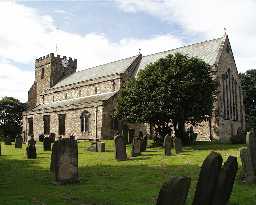St. Mary's Church AKA St Marys Church, Hall Walks, Easington Village (Easington)

Church of St Mary © DCC 2000
Photograph of St. Mary's Church 2016
Photograph of windows to side of St. Mary's Church, Easington 2016
Photograph of back of St. Mary's Church 2016
Photograph of cross at St. Mary's Church 2016
Photograph of North side sign at St. Mary's Church 2016
Photograph of Saxon Cross sign at St. Mary's Church 2016
Photograph of South side sign at St. Mary's Church 2016
Photograph of St. Mary's Church, Easington 2016
Photograph of warning sign at St. Mary's Church 2016
Photograph of wall and window at St. Mary's Church 2016
Photograph of door at St. Mary's Church, Easington 2016
Photograph of tower at St. Mary's Church 2016
Photograph of side of St. Mary's Church 2016
Photograph of pipe at St. Mary's Church 2016
Photograph of arched windows at St. Mary's Church, Easington 2016
Photograph of windows at back of St. Mary's Church 2016
Photograph of door at side of St. Mary's Church 2016
Photograph of square window at St. Mary's Church 2016
Photograph of square window and pipe at St. Mary's Church 2016
Parish church. Romanesque tower, remainder of church early 13th century. Extensive restoration in 1853 by P.C. Hardwick. Sandstone and limestone rubble masonry. Steeply-pitched green slate roof. Square west tower, aisled nave, chancel and north chapel. Long, low proportions.
D35467
Early Medieval (410 to 1066)
Victorian (1837 to 1901)
First World War (1914 to 1918)
Medieval (1066 to 1540)
Victorian (1837 to 1901)
First World War (1914 to 1918)
Medieval (1066 to 1540)
Disclaimer -
Please note that this information has been compiled from a number of different sources. Durham County Council and Northumberland County Council can accept no responsibility for any inaccuracy contained therein. If you wish to use/copy any of the images, please ensure that you read the Copyright information provided.